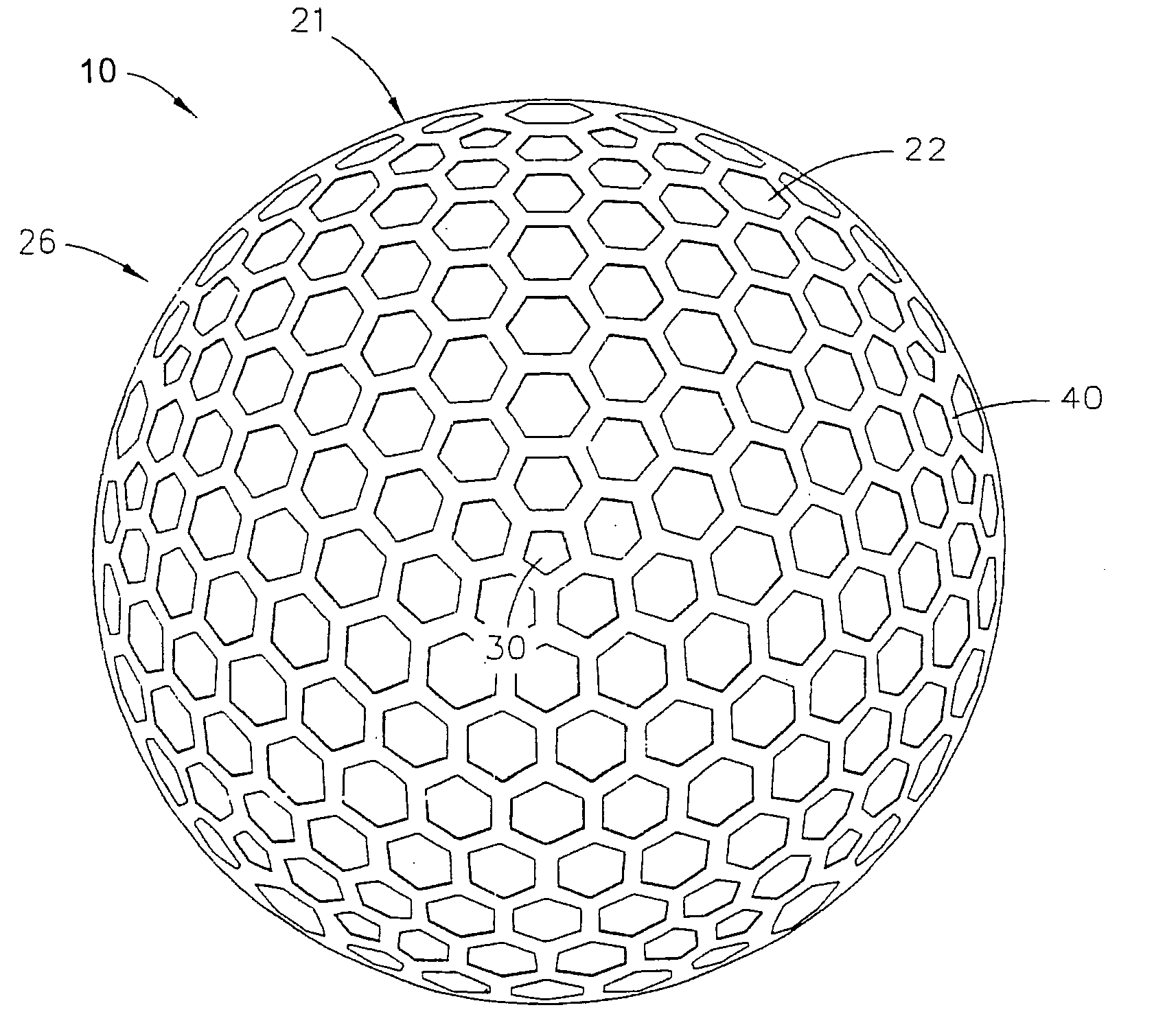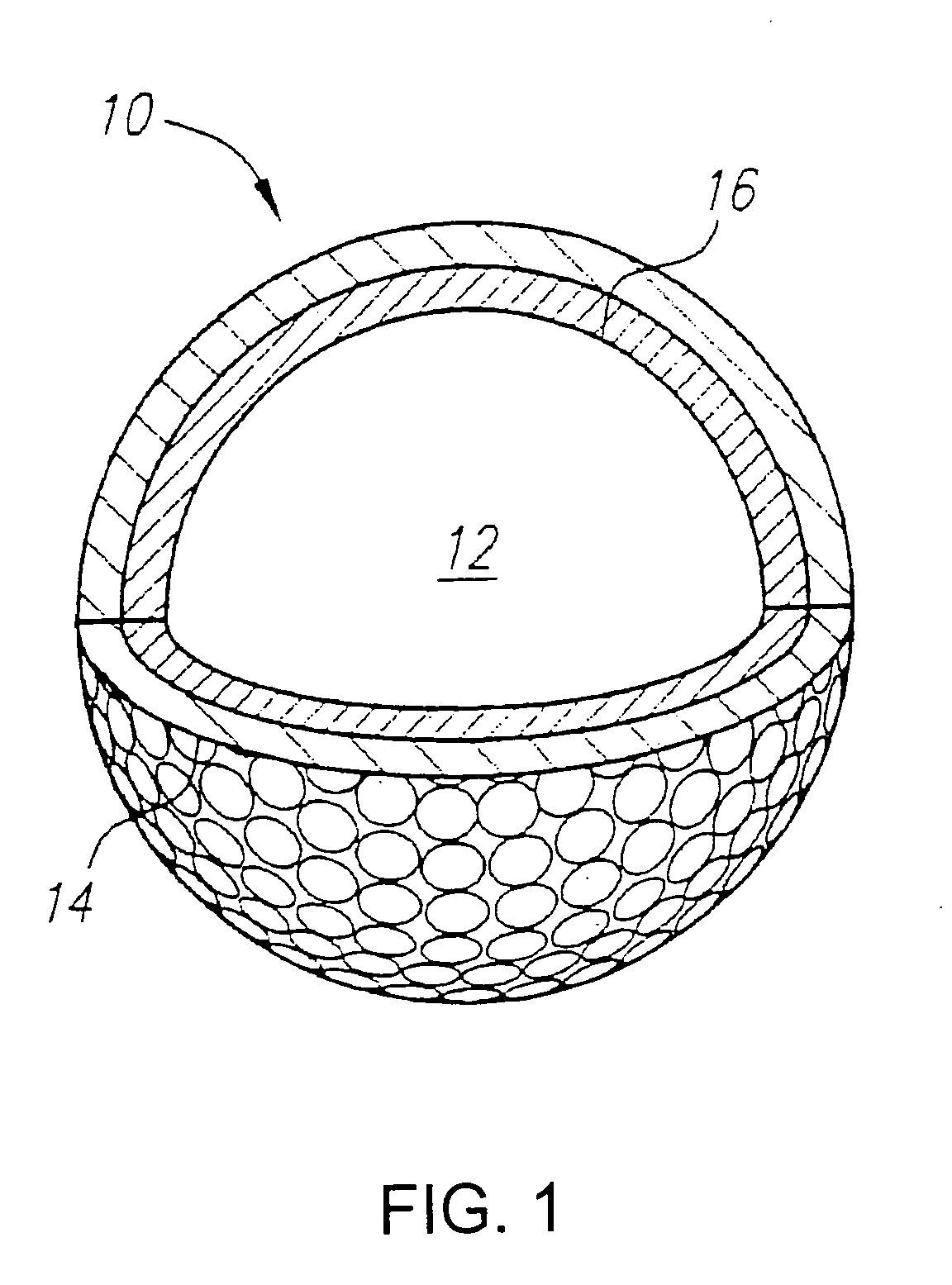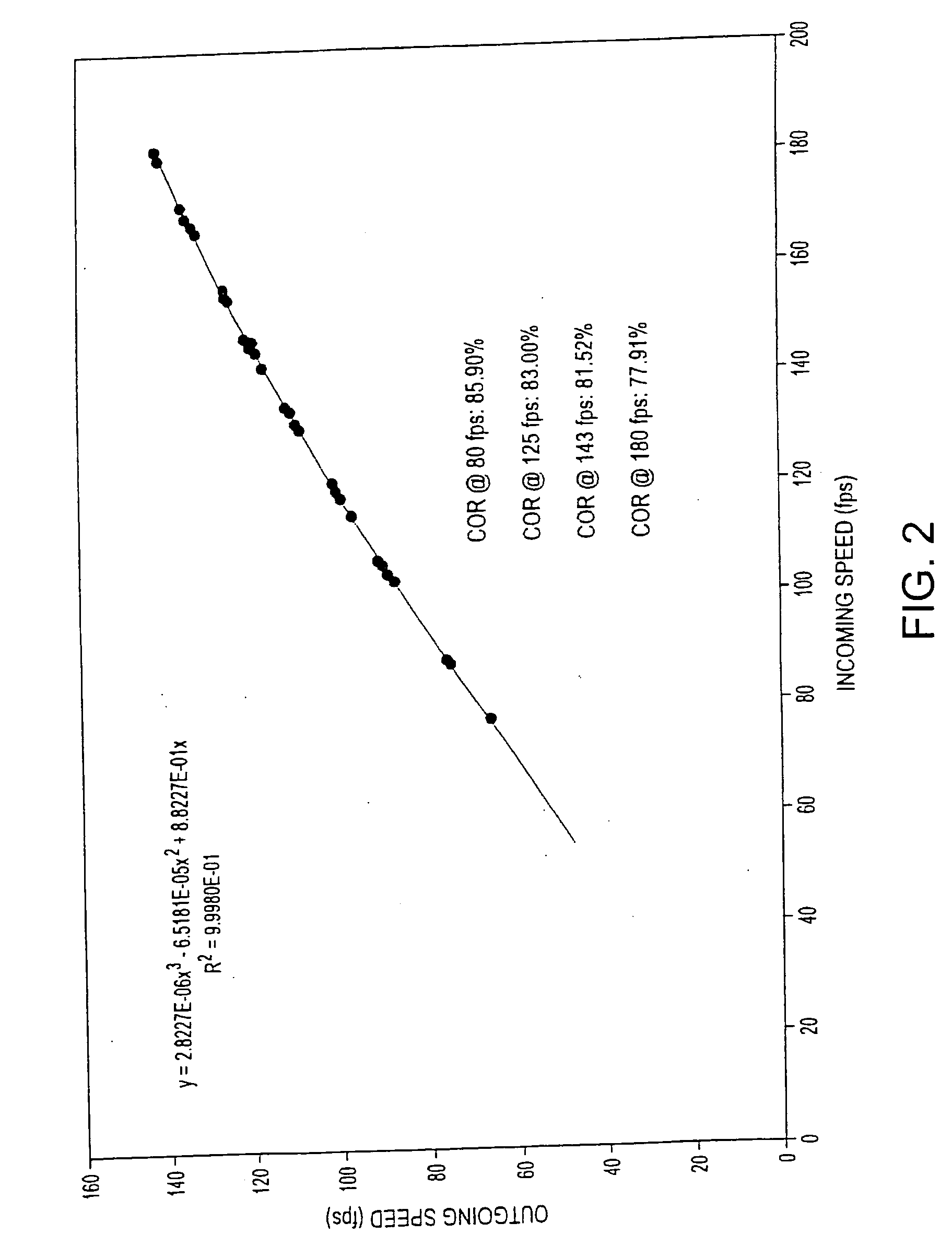Golf ball with high coefficient of restitution
a golf ball and coefficient technology, applied in the field of golf balls, can solve the problems of non-traditional golf balls that have been commercially unsuccessful, and achieve the effect of increasing the distance a golf ball travels
- Summary
- Abstract
- Description
- Claims
- Application Information
AI Technical Summary
Benefits of technology
Problems solved by technology
Method used
Image
Examples
Embodiment Construction
[0059] As shown in FIG. 1, a golf ball of the present invention is generally designated 10. The golf ball 10 has a coefficient of restitution greater than 0.7964 at 143 feet per second, and an USGA initial velocity less than 255.0 feet per second. The golf ball of FIG. 1 is a solid three-piece golf ball 10 having a core 12, a cover 14 and an intermediate layer 16. Those skilled in the pertinent art, however, will recognize that other golf balls may be utilized without departing from the scope and spirit of the present invention.
[0060] The surface geometry of the golf ball 10 is a non-dimple surface geometry and will be described in greater detail below.
[0061] The golf ball 10 is finished with either a very thin (microns in thickness) single top coating, or is painted with one or more base coats of paint, typically white, before application of a clear coat. The material of the cover 14 may be doped for coloring, as is well known in the art.
[0062] The core 12 of the golf ball 10 is...
PUM
 Login to View More
Login to View More Abstract
Description
Claims
Application Information
 Login to View More
Login to View More - R&D
- Intellectual Property
- Life Sciences
- Materials
- Tech Scout
- Unparalleled Data Quality
- Higher Quality Content
- 60% Fewer Hallucinations
Browse by: Latest US Patents, China's latest patents, Technical Efficacy Thesaurus, Application Domain, Technology Topic, Popular Technical Reports.
© 2025 PatSnap. All rights reserved.Legal|Privacy policy|Modern Slavery Act Transparency Statement|Sitemap|About US| Contact US: help@patsnap.com



